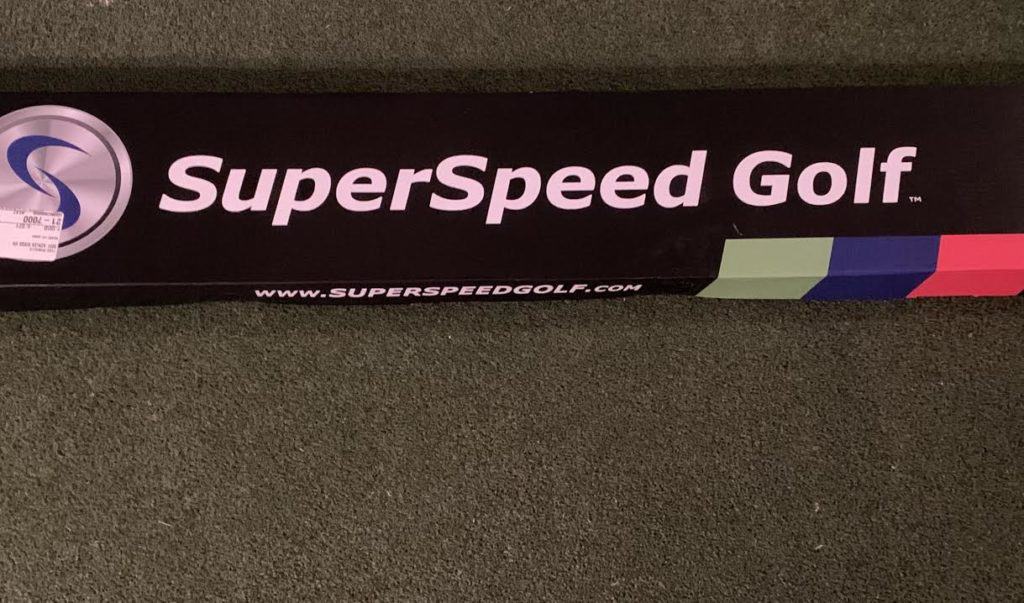We all want to be able to hit our driver long, high and far.
Some of us might spend plenty of time working on our speed and chasing the goal of becoming a quality driver of the golf ball.
One alternative, especially on shorter, narrow holes is to pull the 3 wood, but many fear the loss of distance and having a longer approach shot into the greens.
But how much distance difference is there between the 3 wood and driver.
3 Wood vs Driver Distance: What is the difference?
The difference ranges on average between 20-35 yards. For comparison the distance gap between driver and 3 wood on the PGA is 32 yards. On the LPGA the difference is 23 yards. For most amateurs the range would be between 20-30 yards depending on their swing speed.
The LPGA Tour average swing speed with a driver is 94 miles per hour, while the PGA Tour is at 113 miles per hour with the driver.
Many amateurs average somewhere between these two numbers with many falling between 95 and 100 miles per hour.
It is safe to say that the difference in distance between the driver and 3 wood is around 25 yards for the amateur golfer.
Update: I have found that on difficult tee shots, I will often hit a “bunt” driver that flies straight as can be and a similar distance to a full 3 wood. I have more control with the “bunt” driver compared to the full swing 3 wood. Develop this “bunt” swing and you are on your way to hitting many fairways and keeping your ball in play on the most difficult golf holes!

How To Decide On What Club To Use
Step 1: Measure on a Launch Monitor
Understanding your swing speed and ball speed with both the driver and your 3 wood can be beneficial for your game. Knowing a distance within 5 yards on the difference of total yardage will help you plan accordingly.
One key stat to understand is your dispersion between your furthest left shot and your furthest right. Did you know that the dispersion on the PGA Tour with the driver is 70 yards from left to right? This is much higher than a lot of people who guess if questioned.
I would highly recommend a Launch Monitor like the SkyTrak that I own. I am able to work on many things swing related with instant feedback on the following:
- Swing Speed
- Ball Speed
- Spin Rate
- Carry and Total Distance
- Launch Angle
- Spin Axis
This data allows me to understand what is taking place with my swing and what the results are.
If you visit any PGA Tour event you will see plenty of golfers utilizing their launch monitors. While most can’t afford a Trackman, there are some very affordable options in the 500-2000 dollar range. I own the SkyTrak and I think the world of it.
Here are the top 3 options to check out:
Step 2: Assess the Golf Hole You Are Playing
Some key questions to ask:
- How long is the hole?
- Are there any water hazards that run across the fairway?
- Is the fairway/rough wider at your 3 wood average distance of your driver distance?
- Where is your typical miss? Is there significant trouble there?
Length of Hole: Starting with how long the hole is would be a great starting point. If I am standing on the tee of a 440 yard par 4, chances are I am using the driver. If I average around 265 with the driver, but only 240 with the 3 wood, I don’t want to have a 200 yard shot into the green for my approach shot. That extra 25 yards of distance with the driver, will give me a 5 iron instead of a utility iron.
Water Hazards: Of course if the hole is 4040 yards, but there is a hazard at the 260 mark, I will want to hit my 3 wood and leave myself a longer shot into the hole. This is a pretty easy decision.
Width of Fairway/Rough: The next key is that some might choose a 3 wood, but this is where the hole is most narrow. Instead if you can hit the driver on this hole, past the most narrow spot, the driver is the go to shot. If the hole gets really narrow at the length your hit your driver, the 3 wood is the best choice. Golfers have started using tools like Google Earth to measure the hole before they head to the course to get an understanding of the best club to hit off the tee.
Typical Miss: I know that my miss is an overdraw. If there is a hazard at 265 to the left of the hole, I might go with 3 wood to ensure I stay far enough back and take my chances on the longer approach shot into the green.

Step 3: What Shape Shot Do You Hit
If you can only play a draw and the hole calls for a fade, the 3 wood might help keep you out of trouble. The perfect example of this is the 18th hole I play at my home course that is 400 yards, but requires a draw. My playing partner can only hit a fade and is best off hitting his 3 wood and leaving 200 yards in versus hitting it into the trees and almost guaranteeing a bogey on this hole.
Those that can work the ball both ways on a consistent basis can play the driver more frequently!
BONUS TIP: Train for Speed!
This is something that can help you with both the driver and the 3 wood when it comes to total distance! Your swing speed is not a fixed speed.
I believe many used to believe, well this is just how fast I can swing.
Recent training tools have started to change many minds. We have seen many of the professional golfers get longer and longer with their tee shots as a result of additional swing speed. You will find many touring pros using the SuperSpeed System, which I highly recommend.
SuperSpeed Golf is one option to increase your swing speed through a science based overspeed training approach. In simple terms, you train by swinging a lighter club (20%) faster than you swing your driver. Over time, by training at a higher speed, your mind and body feel safe to swing that fast with your normal driver, resulting in an increase in driver swing speed.
The SuperSpeed System provides 3 different weighted sticks and takes the golfer through a training protocol every other day for about 15 minutes. The golfer can expect to see a 5-8% increase in swing speed, resulting in 20-30 yards for most golfers. The great news is that the 5-8% can be expected as early as the first training session. The additional speed will become more permanent after about 30-60 days of training.
My own experience has been an increase of 7-10 miles per hour on average from between 98-101 all the way up to 106-109. My goal is to hit the PGA Tour average of 113 mph in the coming months. I will continue to train every other day and watch in amazement as I am hitting drivers longer now than ever before!
Phil Mickelson has been known to increase his swing speed in the past year or so and is close to 120 miles per hour in his swing speed. There are potential results for golfers of all ability levels and age!
Check current price on SuperSpeed Golf System, here!
| Original Swing Speed | After 4-6 Weeks | New Carry Distance | Total Distance |
| 95 | 102 | 245 | 265 |
| 100 | 108 | 259 | 279 |
| 105 | 113 | 271 | 291 |
| 110 | 118 | 283 | 303 |

Final Thoughts: 3 Wood vs Driver Distance
The debate will continue on for decades about the best club to hit off the tee. If you follow the lead of the PGA Tour, you will see more and more playing the driver more frequently. These are the professional golfers that earn money playing golf. They play the driver more frequently because analytics have made it clear that driver is often the better option.
The lost yardage compared to the gain in accuracy often will shot higher scores from 30 yards back of the even if in the fairway. There is only a 7% increase in fairways hit when the two clubs are prepared.
The bottom line is to practice that driver, increase your swing speed and maximize your distances and your ability to make more pars and birdies! However, if playing a short course with plenty of hazards and trouble, if you train for enough speed that 3 wood can become a major asset in your game!
Take Action – What You Can Do Today to Get Better
What does this mean for you? I believe in the following recipe to get better:
1 – Improve your motion in the golf swing by identifying a golf instructor. Here are some options:
Here is a list of golf instructors that we have reviewed:
2 – Train to swing faster and improve your swing speed. Here are some options:
Looking to gain more Speed and Distance in your swing. Two Options:
3 – Understand course strategy and work to break through your next barrier. Here is a series on breaking through:
We have provided guides on how to break 100, 90, 80 and 70. Check out more below, if interested.
4 – Practice Frequently
Did you know that I build a golf simulator in my garage and have played over 500 rounds of golf on my SkyTrak system? It has been a game changer and one worth checking out. Here are some of my other posts on golf simulators frequently asked questions:
- Is a Golf Simulator Worth It?
- How to Build a Golf Simulator?
- What is the Best Golf Simulator?
- Golf Simulator Accessories?
- How to Build a Golf Simulator for under $7000
- Top 11 Reasons to Buy a SkyTrak
- How to Build a Golf Simulator for Under $1000
- Why Build A Golf Simulator?
- What Space is Needed?
- Can A Golf Simulator Improve My Game?
- How Much Does A Golf Simulator Cost?
- Don’t Forget to Check out our 15 best golf swings of all time.
I am an amateur golfer on a journey to get better, enjoy the game as often as possible and share my passion and knowledge with others. I have coached high school golfers at a high level and have a great passion for the game and want to give back. I enjoy learning about the golf swing and am currently studying to be a certified professional golf instructor. Join me in our journey to get better everyday.

